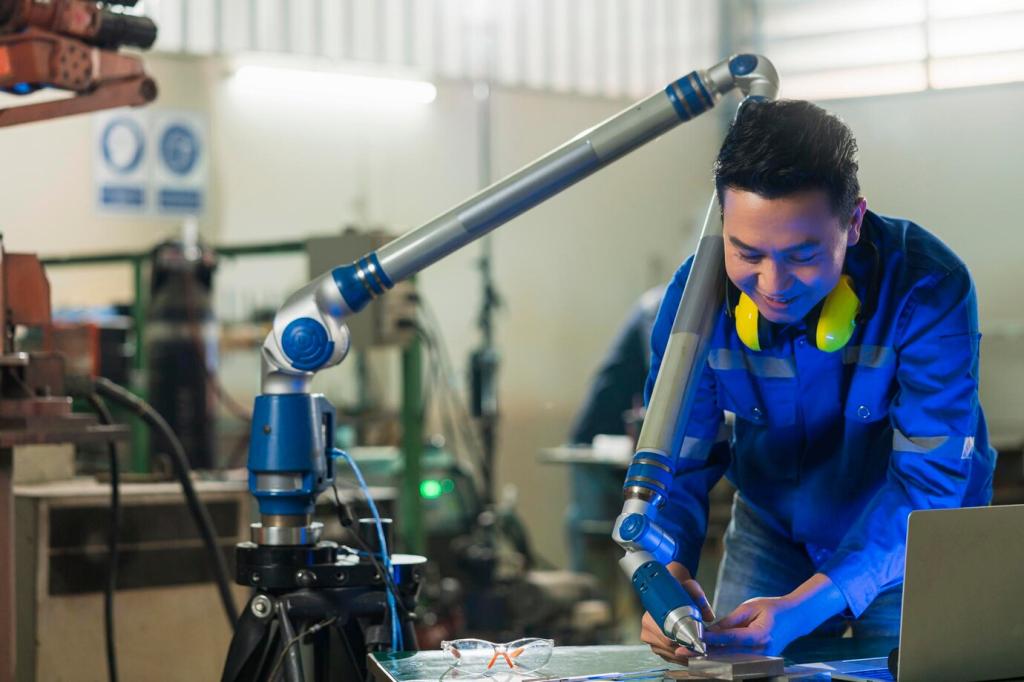
Today’s Theme: AI-Assisted Climate Control in Smart Homes
Explore how intelligent systems learn your habits, balance comfort with efficiency, and turn every room into a responsive, energy-savvy space. Join the conversation, share your needs, and help shape smarter, greener homes.
It’s more than a smart thermostat. AI blends sensor data, preferences, and forecasts to continuously tune temperature and airflow, learning your rhythms over time. Tell us what comfort means to you, and we’ll spotlight your insights.
Understanding AI-Assisted Climate Control
Sensing the Home: Data That Feeds the Brain
Temperature, Humidity, and CO₂ as Comfort Signals
Thermal comfort is not just about temperature. Humidity influences perceived warmth, while CO₂ hints at ventilation needs. AI weighs these together to avoid stale air and stuffiness. Share your must-have comfort metrics in the comments.
Presence Detection and Behavioral Patterns
Motion sensors, contact sensors, and optional geofencing reveal occupancy patterns. Over time, AI notices routines and anticipates needs, pre-heating or cooling before you arrive. Would you allow presence detection for better comfort? Tell us why or why not.
Weather and Tariff Feeds
Linking local weather forecasts and real-time electricity tariffs lets AI pre-cool during cheap, clean energy windows and coast through peak periods. Follow us for weekly guides on connecting utility data safely and effectively.

Reinforcement learning tests small adjustments, rewards comfort and efficiency, and converges on smarter setpoints. It learns your tolerance for swings. Would you try an adaptive mode that explains each change? Chime in below.

Predictive models consider building thermal mass and sunlight to start heating or cooling at the right moment. The goal: arrive to comfort, not wait for it. Subscribe for a beginner’s guide to thermal mass in plain language.

Short, human-readable justifications—like “Cooling early due to forecasted heatwave and low-priced wind power”—build trust. What level of explanation do you prefer: brief summaries or full detail? Share your preference.
Shifting Loads to Greener or Cheaper Hours
By nudging setpoints when renewable generation peaks, AI lowers emissions and bills. Think of it as climate-friendly preconditioning. If your utility offers time-of-use rates, tell us how AI could help you take advantage.
Heat Pumps, Radiant Floors, and Legacy HVAC
AI thrives across systems: modulating heat pumps, slow-but-steady radiant floors, and even variable-speed fans on legacy furnaces. It learns each system’s quirks. Comment with your equipment type, and we’ll tailor upcoming advice.
Human-Centric Comfort and Experience
Some like it cooler for sleep; others prefer warmth in morning routines. AI can blend profiles and negotiate common spaces. Would your household try individual comfort profiles? Tell us how you’d prioritize rooms.

Human-Centric Comfort and Experience
Voice commands handle the exceptions; automation handles the everyday. Clear feedback—lights pulsing or a short app note—builds confidence. Comment with the command you’d use most, and we’ll gather the top five for a quick-start guide.
A Story from the Field
01
The Weekend Cabin That Learned the Family’s Rhythm
A family’s lakeside cabin was freezing on Friday nights and stuffy by Sunday noon. After installing AI-assisted control, it pre-warmed two hours before arrival and gently coasted as the sun hit the south windows. Comfort rose, bills fell.
02
Lessons Learned: Overshooting, Drafts, and Fixes
Early on, the system overshot temperatures. We trimmed learning rates, added a draft sensor near the back door, and tuned radiant floor timing. The fix stuck. Have you solved a comfort quirk? Share it to help others.
03
Your Turn: Share Your Climate Quirks
Do you have a cold hallway or a sun-baked office? Describe the pattern, time of day, and weather. We’ll feature selected cases and propose AI strategies in an upcoming subscriber-only post. Join us and contribute.
Privacy, Security, and Reliability
Collect only what’s needed, keep raw data local when possible, and sync summaries, not exhaust logs. Strong defaults matter. Would local-first AI make you more comfortable adopting smart climate control? Tell us your stance.


Getting Started and What’s Next
Look for open standards, strong sensor coverage, variable-speed equipment, and good developer support. Compatibility today avoids lock-in tomorrow. Share your short list, and we’ll publish a community-vetted starter stack.
